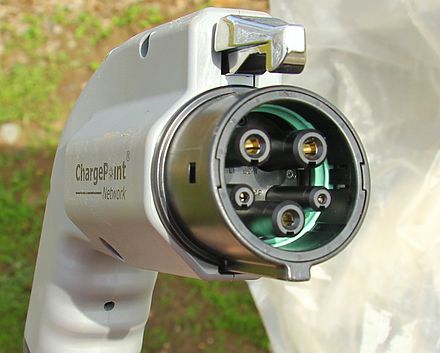One of the most common questions people ask about our Electric Vehicles is how long it takes to charge them. I’ve answered this in a variety of ways but I’m not sure I’ve ever fully answered the question. Part of the reason people are concerned with charge time is because one of the primary inconveniences of driving a car has been gassing it up. You must drive to a station, wait for a pump, insert a payment card, wait for authorization, select a fuel type/grade, start the pump, and then stand outside in the weather to monitor it. With a BEV, the vast majority of charging happens in your garage or driveway. Thus my answers tended to highlight this difference in “filling up” paradigms.
- “About 30 seconds. I plug it in when I get home and unplug when I leave.”
- “It depends on what I’m plugged into.”
- “It doesn’t matter, because it charges while I’m sleeping.”
Those answers are valid, but they don’t tell the whole story. That’s because the story is complex. Let’s start with the simplified version.
- Level 1 adds 5 Miles of range Per Hour of Charging
- Level 2 adds 20 MPHC
- DC fast charging adds over 100 MPHC.
EV Charging Levels

Levels 1 and 2 use standard household (AC) current. The vehicle has an onboard charger that converts household AC current to the DC current which is stored in the battery pack. To charge at levels 1 and 2, a special adapter called an Electric Vehicle Supply Equipment (EVSE) is used. Every EV comes with an EVSE and they all share the common J1772 connector.
Then there is DC fast charging. Since the car doesn’t need to convert the DC current, it can charge the battery as fast the battery can store it. In fact, the car tells the DC charger what rate it can accept and then the charging station delivers as much as it can, without exceeding the cars limit. There are several DC fast charging standards including CHAdeMO (Nissan), Supercharger (Tesla), GB/T (China), and SAE Combo/CCS (everyone else).
Charge Times
Level 1, also known as trickle charging, is the slowest charge rate and uses standard 120V wall outlets that you can find nearly everywhere. On a typical 12-hour overnight charge, a BEV will gain about 60 miles of range. Considering that most people travel under 40 miles per day, L1 is often good enough. Older BEVs like our leased ’13 and ’16 Leafs included an EVSE that supported only Level 1 charging. We found it sufficient in all but the coldest week or two of the year.
Level 2 adds 20 MPHC. Level 2 is the most common and the EVSEs are rated by the maximum power they can deliver. The most common EVSE uses the 50A NEMA 14-50 plug, draws 32 amps continuous, and adds about 240 miles of range overnight. The NEMA 14-50 is the same outlet commonly used for electric ranges, ovens, generators, and RVs. You can often find the 14-50 plug in kitchens, garages, and campgrounds across America. The EVSE included with our ’19 Leaf and ’19 Tesla Model 3 both sport a NEMA 14-50 plug. If your garage doesn’t have one, getting a NEMA 14-50 outlet installed is a good bet. Be advised though, ask your electrician for an “oven outlet,” as many electricians have charged hundreds of dollars more for an EV outlet than the identical oven outlet.
If you already have a 240V outlet of any sort in your garage, there are 3rd party EVSEs with plugs matched to nearly any standard 240V outlet. A dryer, welder, air conditioner, or generator outlet in your garage is sufficient. Lower rated (~3.3kW) EVSEs can be found for $200-$300 whereas a reputable (ChargePoint, Clipper Creek, JuiceBox) 8kW EVSE will run about $500. If you have a Tesla, you can buy $35 adapters for the included EVSE for all the common 240V plug types.
DC Fast Chargers require more electricity than a house and are industrial machines. They are typically found at commercial buildings (like Nissan dealers) and along major highways. Whereas L1 and L2 stations are typically used at home, DCFCs are typically used on longer trips. Here’s a few examples of DC fast charging rates:
- Our Tesla Model 3 Long Range can add 125 miles in 15 minutes, or 267 MPHC
- The Chevy Bolt & Nissan Leaf can add 30 miles per 10 minutes, and 120 MPHC.
Careful readers may have noticed that the peak charge rate is substantially higher than the MPHC. That’s because Li-Ion batteries (just like in your phone/tablet/laptop) must be charged slower as they approach full. The tapering is much more pronounced with DCFC and it’s done to protect the battery. In fact, it is the car that tells the charger the rate at which it can accept power. Most EVs charge at their full rate up to about 80% and then taper. Because of tapering, long road trips in a BEV mean your trip will take less time if you charge to 80% and then leave for the next charging station. Tesla actually does this for you–it will charge enough to get to the next Supercharger (plus some margin) and then suggest hitting the road.
| Level | Volts | Amps | MPHC | kW |
| 1 | 120 | 12 | 4-5 | 1.4 |
| 2 | 240 | 35-80 | 20-50 | 3.3 – 15 |
| DC – CHAdeMO | 500 | 125 | up to 140 | usually 50, up to 62.5 |
| DC – CCS | 200-1000 | < 500 | depends | up to 350 |
| DC – Tesla SuperCharger | 480 | 300 | 267 | 140 |

You must be logged in to post a comment.